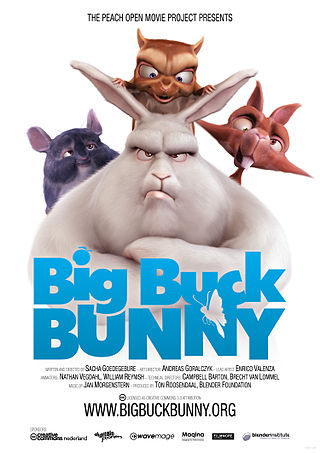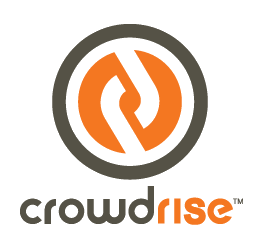
The Blender Foundation is a Dutch nonprofit organization (Stichting) responsible for the development of Blender, an open-source 3D content-creation program.
Source code escrow is the deposit of the source code of software with a third-party escrow agent. Escrow is typically requested by a party licensing software, to ensure maintenance of the software instead of abandonment or orphaning. The software's source code is released to the licensee if the licensor files for bankruptcy or otherwise fails to maintain and update the software as promised in the software license agreement.
Various copyright alternatives in an alternative compensation systems (ACS) have been proposed as ways to allow the widespread reproduction of digital copyrighted works while still paying the authors and copyright owners of those works. This article only discusses those proposals which involve some form of government intervention. Other models, such as the street performer protocol or voluntary collective licenses, could arguably be called "alternative compensation systems" although they are very different and generally less effective at solving the free rider problem.
The commercialization of copylefted works differs from proprietary works. The economic focus tends to be on the commercialization of other scarcities, and complimentary goods rather than the free works themselves. One way to make money with copylefted works is to sell consultancy and support to the users of the work. Generally, financial profit is expected to be much lower in a business model utilising copyleft works only than in a business using proprietary works. Another way is to use the copylefted work as a commodity tool or component to provide a service or product. Android phones, for example, include the Linux kernel, which is copylefted. Unlike business models which commercialize copylefted works only, businesses which deal with proprietary products can make money by exclusive sales, single and transferable ownership, and litigation rights over the work, although some view these methods as monopolistic and unethical, such as those in the Free Software Movement and the Free Culture Movement.
Sellaband was a music website that allowed artists to raise the money from their fans and the SellaBand community in order to record a professional album. Sellaband used the mechanisms of crowdfunding and was to be seen as a Direct-to-Fan/fan-funded music platform utilising a Threshold Pledge System / Provision Point Mechanism. It was set up by Johan Vosmeijer, Pim Betist, and Dagmar Heijmans in August 2006. Its offices used to be located in Amsterdam, Netherlands, but it was originally incorporated in Bocholt, Germany.

Big Buck Bunny is a 2008 animated comedy short film featuring animals of the forest, made by the Blender Institute, part of the Blender Foundation. Like the foundation's previous film, Elephants Dream, the film was made using Blender, a free and open-source software application for 3D computer modeling and animation developed by the same foundation. Unlike that earlier project, the tone and visuals departed from a cryptic story and dark visuals to one of comedy, cartoons, and light-heartedness.
Companies whose business centers on the development of open-source software employ a variety of business models to solve the challenge of making profits from software that is under an open-source license. Each of these business strategies rest on the premise that users of open-source technologies are willing to purchase additional software features under proprietary licenses, or purchase other services or elements of value that complement the open-source software that is core to the business. This additional value can be, but not limited to, enterprise-grade features and up-time guarantees to satisfy business or compliance requirements, performance and efficiency gains by features not yet available in the open source version, legal protection, or professional support/training/consulting that are typical of proprietary software applications.

Ton Roosendaal is a Dutch software developer and film producer. He is the original creator of the open-source 3D creation suite Blender and Traces. He is also known as the founder and chairman of the Blender Foundation, and for pioneering large scale open-content projects. In 2007, he established the Blender Institute in Amsterdam, where he works on coordinating Blender development, publishing manuals and DVD training, and organizing 3D animation and game projects.
Bountysource was a crowdsourcing website for open source bounties and since 2012 also for crowdfunding. Users could pledge money for tasks using micropayment services that open-source software developers can pick up and solve to earn the money. It also allowed large-scale fundraising for big improvements on the project. It integrated with GitHub using its bug tracker to check if the problem is resolved and connect the resolution with GitHub's pull request system to identify the patch. When the users agree that they are satisfied and the project maintainer merged the proposed changes to the source-code, Bountysource would transfer the money acting as a trustee during the whole process.
Fan-funded music is crowdfunding for music. Often, fan-funded music occurs in conjunction with direct-to-fan marketing. Fans of music have the option to donate and collectively raise money with the goal of jump-starting the career of a given musical artist. The fan-funding of music occurs primarily through web-based services using a business model for crowdfunding. Fans are typically given rewards based on their monetary contributions.

CrowdRise is a for-profit crowdfunding platform that raises charitable donations. CrowdRise was founded by Edward Norton, Shauna Robertson, and the founders of Moosejaw, Robert and Jeffrey Wolfe. CrowdRise was acquired in 2017 by GoFundMe.
PledgeMusic was an online direct-to-fan music platform, launched in August 2009. It was started to facilitate musicians looking to pre-sell, market, and distribute projects; such as recordings and concerts. It bore similarities to other artist payment platforms as ArtistShare, Kickstarter, Indiegogo, Patreon, RocketHub and Sellaband.
The Danish Chamber Orchestra is a chamber orchestra in Denmark. It was the Danish National Chamber Orchestra from 1939 to 2014, when it was under the Danish Broadcasting Corporation (DR). Since 2015, it has been funded privately.
Video game development has typically been funded by large publishing companies or are alternatively paid for mostly by the developers themselves as independent titles. Other funding may come from government incentives or from private funding.

Spacehive is a United Kingdom-based crowdfunding platform for projects aimed at improving local civic and community spaces.
Invesdor is an international crowdfunding platform operated by several companies which make up the Invesdor Group. With headquarters in Berlin, Germany; Helsinki, Finland; Vienna, Austria and Amsterdam, the Netherlands, Invesdor is one of Europe’s largest crowdfunding platforms and operates as an intermediary between companies seeking investment and investors . Invesdor’s low investment threshold aims to empower small investors to invest via their platform. As of May 2023, Invesdor has been able to connect over 170,000 investors with projects they see the potential in, collecting €438 million in pledges from them. Financed projects include for example restaurants, medtech companies, and sustainable energy projects such as solar and windfarms.

Community Funded is a crowdfunding platform based in Fort Collins, Colorado allowing project creators to create one or more fundraising projects on the site with the goal of helping people and organizations with projects find the ideas, funding, and resources they need to be successful.

The Audience Engine is announced open-source, customizable suite of fundraising tools for public radio being developed by the Congera Corporation, a subsidiary of WFMU Radio. It was conceived by and is being developed under the supervision of WFMU management, but as of November 2020 no product has been announced, demoed or released thus rendering the project as effectively vaporware.
Crowdfunding is the practice of funding a project or venture by raising money from a large number of people, typically via the internet. Crowdfunding is a form of crowdsourcing and alternative finance. In 2015, over US$34 billion was raised worldwide by crowdfunding.
Asiola is an online crowdfunding platform built to support creative and community-driven ideas in Thailand. It was launched in 2015 in Bangkok by a group of founders comprising technology experts, music industry experts and artists in response to Thailand's burgeoning startup scene. Their aim was to provide a way for fledgling ideas to gather attention and get funded.






